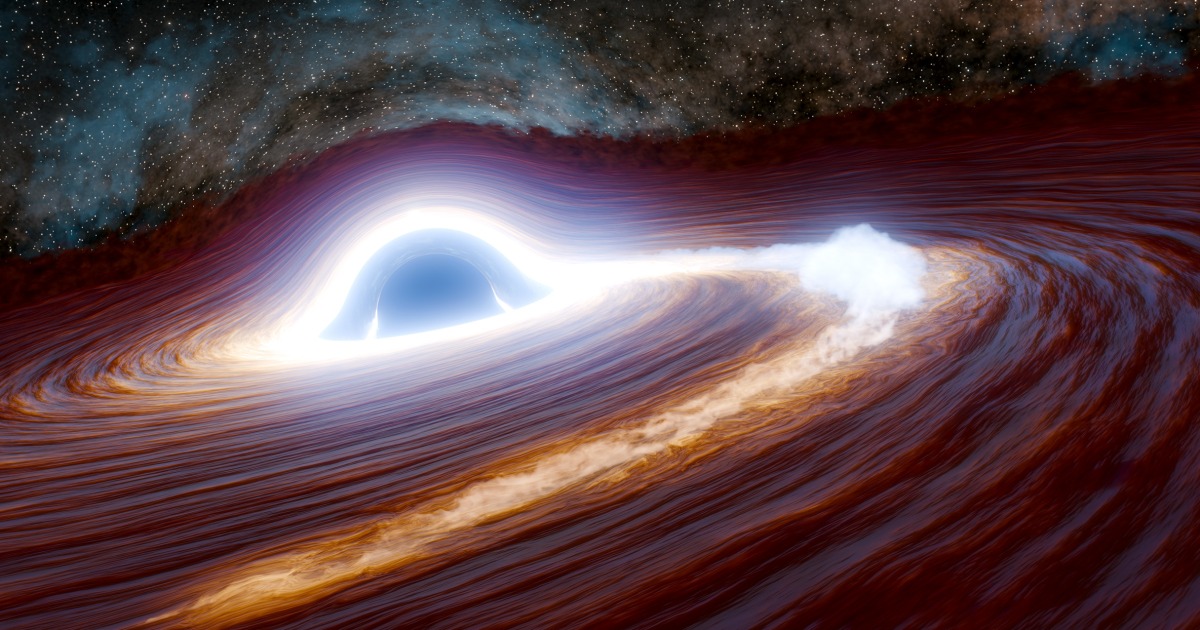A supermassive black gap violently wolfed up an unlimited star, producing a cosmic outburst with the sunshine of 10 trillion suns, in response to a brand new examine.
The black gap flare, because the phenomenon is thought, is regarded as the largest and most distant ever recorded — it was detected from 10 billion light-years away.
“That is actually a one-in-a-million object,” stated Matthew Graham, a analysis professor of astronomy on the California Institute of Know-how and the lead writer of the examine, which was revealed Tuesday within the journal Nature Astronomy.
Graham stated a black gap flare is the almost definitely rationalization based mostly on the outburst’s depth and length, however follow-up research will assist the researchers verify their findings.
It’s common for black holes to eat close by stars, gasoline, mud and different types of matter, however such a gargantuan flaring occasion is exceedingly uncommon, Graham stated.
“This large flare is simply a lot extra energetic than something we’ve ever seen earlier than,” he stated, including that at its peak, the outburst was 30 instances extra luminous than any earlier black gap flare seen thus far.
A part of the depth got here from the sheer dimension of each cosmic objects concerned. The ill-fated star that wandered too near the black gap is estimated to be a minimum of 30 instances the mass of the solar. The large black gap and its surrounding disk of fabric, in the meantime, is estimated to be 500 million instances as large because the solar.
The robust outburst has been occurring for greater than seven years, Graham stated, and is probably going nonetheless occurring.
The flare was first detected in 2018 throughout an in depth sky survey utilizing three ground-based telescopes. On the time, Graham stated, it was registered as a “notably shiny object,” however throughout follow-up observations months later, scientists weren’t in a position to receive a lot helpful info.
As such, the black gap flare was largely forgotten till 2023, when Graham and his colleagues determined to revisit intriguing factors of curiosity from their earlier survey. This time round, the astronomers did a tough calculation of the gap to the notably shiny object that they had seen, and the consequence shocked them.
“Immediately it was: ‘Oh, that is truly fairly distant,’” Graham stated. “And if it’s that distant and it’s this shiny, how a lot vitality is being put out? That is now one thing uncommon and really fascinating.”
It’s not but recognized how precisely the star met its demise, however Graham stated a case of cosmic bumper vehicles could have jostled the star and knocked it off its common orbit across the black gap, inflicting the shut encounter.
The findings assist present a fuller image of how black holes behave and evolve.
“Our thought of supermassive black holes and their environments has actually modified during the last 5 to 10 years,” Graham stated. “There was this traditional picture that the majority galaxies within the universe have a supermassive black gap within the center and it simply sits there and burbles alongside and that’s it. Now we all know it’s a way more dynamic surroundings and we’re solely starting to scratch the floor.”
The flare has been steadily fading over time, he stated, however it’ll possible proceed to be observable with ground-based telescopes for just a few years.

